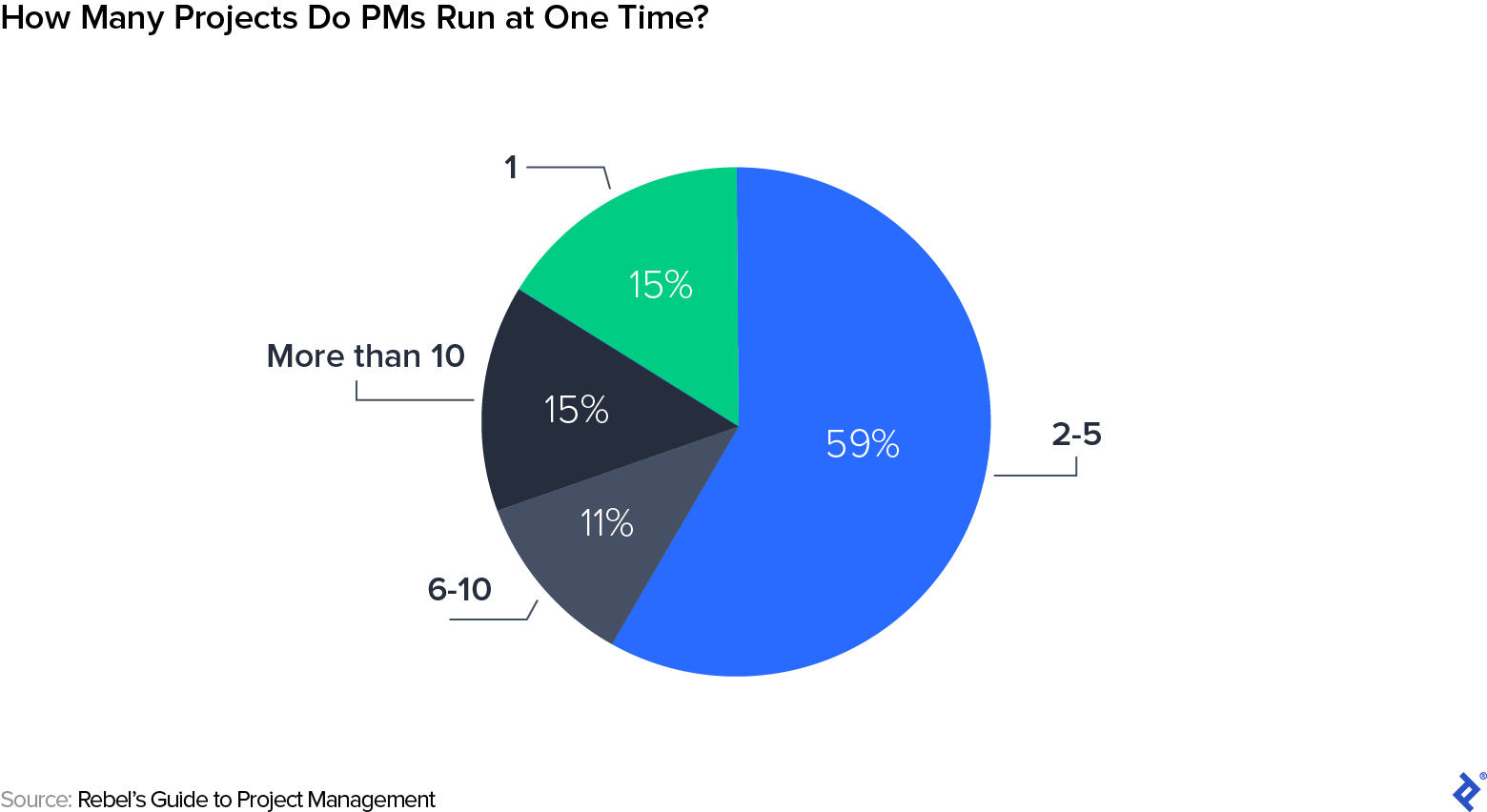Implementing a Project Management Office: 4 Steps to Success
A PMO can deliver huge value, but setting one up can be a challenge—especially if it is an organization’s first time. Ensure a smooth launch with this expert PMO strategy guide.
A PMO can deliver huge value, but setting one up can be a challenge—especially if it is an organization’s first time. Ensure a smooth launch with this expert PMO strategy guide.
Ayman is a project management expert who has consulted for numerous project management offices during his two decades of experience. He is PMP and PMO certified and has been invited to join the prestigious PMO Global Awards Judging Committee on several occasions. He also holds certifications in strategy, leadership, and process improvement and change management from PMI, HEC, and Harvard, respectively.
Expertise
While every project is different, a standardized set of processes and practices can simplify the management of multiple projects and maximize the chances for success. Many businesses use a project management office (PMO) to provide this consistency: 89% of organizations have at least one PMO, a recent report found. Today’s PMO acts as a center of excellence, providing expertise, support, and guidance across an organization.
Project environments are dynamic, and PMOs help organizations gain alignment across multiple project teams, with greater governance and better risk management. With 59% of project managers now running two to five projects simultaneously, and 11% taking on six to 10 at one time, a PMO has become a critical support function. Many successful PMOs work with the C-suite to gain executive buy-in and ensure that the project portfolio is aligned with organizational strategy.
More and more companies are recognizing the value a PMO can offer, but establishing one is a complicated undertaking, with many challenges to overcome and choices to make. During my two decades in project management I have consulted for numerous PMOs and have gained insight into the skills needed to lead one and the best ways to approach implementation.
What Value Does a PMO Bring?
Any PMO is only as good as its leadership and implementation. When functioning optimally, building a robust PMO process will:
- Define, standardize, and maintain best practices and processes across departments.
- Enhance compliance and governance.
- Offer direction and guidance to project managers.
- Manage and allocate resources across projects based on schedules, priorities, and budgets.
- Provide accurate, up-to-date financial and status reports to management and executive leadership.
- Define project selection criteria and align the organizational portfolio with business goals and strategy.
- Improve stakeholder collaboration and satisfaction by setting rules for project culture and cross-departmental communication, as well as consistent training on methodologies, techniques, and best practices.
PMO vs. PM: What’s the Difference?
Although the PMO deals with project management, the two functions operate very differently. Here is a high-level view of how they work together:
Project Management Office | Project Manager |
|---|---|
Designs project management processes from project initiation to closure. | Applies project management processes during the project life cycle. |
Strives to make resources available across many projects and programs. | Utilizes resources for successful project delivery. |
Provides feedback and status reports to stakeholders and leaders. | Provides feedback and status reports to the PMO. |
A PMO leader should:
- Have a solid understanding of project management methodologies and tools.
- Be a visionary with exceptional communication, interpersonal, and strategic skills.
- Have experience with organizational change and know what is needed to make that happen.
- Be up to date with the latest trends in project management.
A common mistake executives make is to hand control of the PMO to their lead project manager. This person may be good at managing projects, but the expertise they apply in day-to-day project management may not meet the required depth of knowledge around standards, processes, or management.
How to Set Up a PMO: 4 Essential Steps
Just as with any project, when setting up a PMO, you need to assess, analyze, and plan. Follow these four steps for implementing successful PMO processes and procedures:
1. Assess the Current State
Before you start out, you must consider the type of PMO you want. Think about what exactly it is that you want to achieve: What should the future state of project management in the organization look like? This will help you highlight the gaps and identify which areas the PMO will aim to address.
There are several types of PMO, and which one you choose will vary according to business needs and the project management maturity within the company (more mature organizations may require less oversight). PMOs are categorized by the level of control they exercise:
-
Supportive: A supportive PMO has a low degree of control. It supports all projects by providing training, templates, and best practices. It operates as a consultant or advisor.
-
Controlling: A controlling PMO checks if the project management tools, standards, and processes are being applied in projects. It doubles as an auditor and an advisor.
-
Directive: A directive PMO maintains a high degree of control and is responsible for the execution of projects. Project managers report to the PMO.
2. Create a Roadmap and Define KPIs
A PMO is made up of three interdependent components: functional, structural, and disciplinary. Define how each component will operate to ensure there is no uncertainty around its responsibilities, goals, or place in the context of the wider business.
Functional Component
Understanding the scope and purpose of the PMO is an important step in determining how it will function. This component could be:
- Setting standards: Establishing processes, templates, and systems, as well as training and coaching project managers.
- Portfolio management: Selecting projects that are aligned with overall organizational strategy.
- Governance: Auditing and reviewing project management processes and ensuring project managers are adhering to them.
- Project delivery: Identifying risks and monitoring progress.
Structural Component
You will also need to define the people, processes, and tools that make up your PMO:
- People: A solid PMO team structure must include strategic thinkers who are well versed in project management methodologies and tools who are comfortable communicating with higher management.
- Processes: These will be based on the PMO’s disciplinary components (see below). Processes should be practical, adaptable, and scalable.
- Tools: These encompass all the ways knowledge will be disseminated by the PMO, ranging from simple templates to sophisticated project management systems.
Disciplinary Component
Your PMO may be managing:
- Resources such as people, equipment, tools, vendors, contracts, and other assets.
- Communication between project managers and stakeholders, particularly project information and status reports.
- Projects to ensure key performance indicators (KPIs) and other metrics are within acceptable ranges and making adjustments to improve.
- Risk by identifying and highlighting any possible risks, particularly those resulting from change management.
Now that you have defined the components and areas of intervention, you can work with stakeholders to prioritize requirements and create a step-by-step roadmap that lays out a PMO strategy for setup and optimization.
Next, identify the KPIs that will be used to measure PMO performance and how you will gather timely, accurate data. KPIs can be built around task completion or milestones, realized benefits of delivered projects and programs, strategic alignment across the portfolio, resource utilization, and more, but you should aim to have KPIs for each of these main areas:
- Practices, methodologies, and tools
- Solution delivery and execution
- Monitoring and control
- People and capabilities
3. Implement the PMO
Organizational change can be difficult, and it’s important to be patient while mindsets shift. You should identify the most problematic processes and prioritize fixing these first, automate tedious tasks where possible, and set up notifications and reminders for deadlines. How project managers respond to the introduction of a PMO will be a decisive factor in its success. Achieving small wins quickly can help to grow their buy-in, as they start to see the value a PMO can offer. Be sure to recognize the efforts of project managers, fulfill their needs where possible, and provide full support and training.
If your organization is large, you can use pilot teams to gain feedback on changes before organizationwide rollout—this will give you the opportunity to make improvements and remedy any initial problems.
4. Review Regularly and Make Improvements
A PMO is not a stagnant entity—it will evolve with the growth of project managers’ skills and knowledge, and with enhancements to systems and tools. Regularly review data to monitor performance and drive improvements, and update your KPIs over time as the PMO matures. The PMO must stay aligned with the organization; when business strategy shifts, the PMO strategy must shift along with it.
Ultimately, every organization is different and there is no one-size-fits-all example PMO implementation plan. It demands diligence and care. Try not to deviate from your goals, keep the overall objectives in mind, regularly communicate progress to stakeholders, and address any concerns promptly.
A Catalyst for Greater Efficiency
A well-executed PMO offers many benefits, but demands a huge amount of effort and change to establish. While a PMO is often viewed as an administrative function, gaining buy-in is central to its effectiveness and should not be an afterthought. A PMO should be a catalyst for greater accountability, synergy, and discipline, and above all should foster greater efficiency, enabling project managers to do more with less.
Further Reading on the Toptal Blog:
- Project Management Cheat Sheet
- 5 Indispensable Qualities of Top Project Managers
- 3 Essential Project Manager Skills and How to Hone Them
- Program Manager vs. Product Manager: A Conflict Resolution Strategy
- How to Use Coaching in Organizational Change Management
- Why KPI Management Needs Metrics for Empathy and Fairness
- What Is a Product Owner? A Project Manager’s Guide
Understanding the basics
What is the role of a PMO?
The role of a project management office (PMO) is to provide support and guidance to project managers across an organization and to ensure projects align with business strategy.
What are the benefits of having a PMO?
A successful PMO will deliver many benefits, including enhanced accountability, improved stakeholder collaboration, consistency, and increased efficiency.
What is a PMO vs. a PM?
A project management office (PMO) operates in a different way than a project manager (PM). The PMO sets out the processes and resources that the PM will utilize in their projects. The PM delivers reports to the PMO, which can then be used to offer project performance insights to organizational leaders.
Beirut, Beirut Governorate, Lebanon
Member since July 20, 2020
About the author
Ayman is a project management expert who has consulted for numerous project management offices during his two decades of experience. He is PMP and PMO certified and has been invited to join the prestigious PMO Global Awards Judging Committee on several occasions. He also holds certifications in strategy, leadership, and process improvement and change management from PMI, HEC, and Harvard, respectively.


